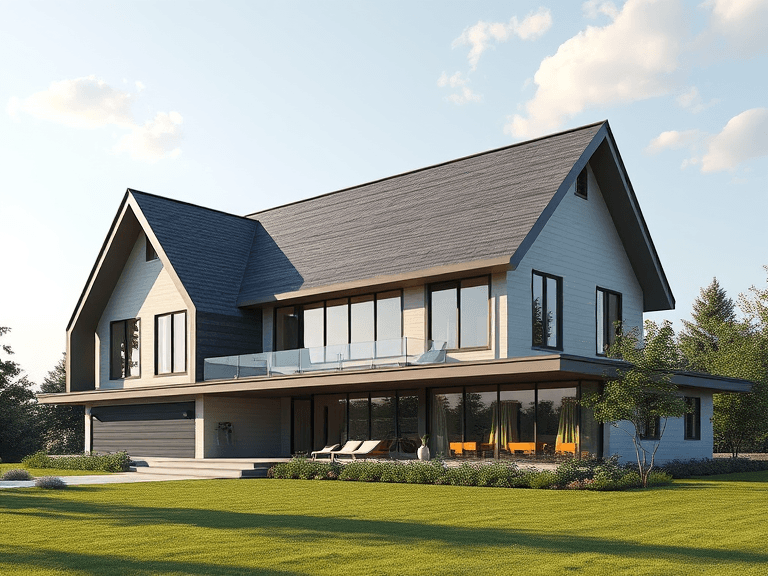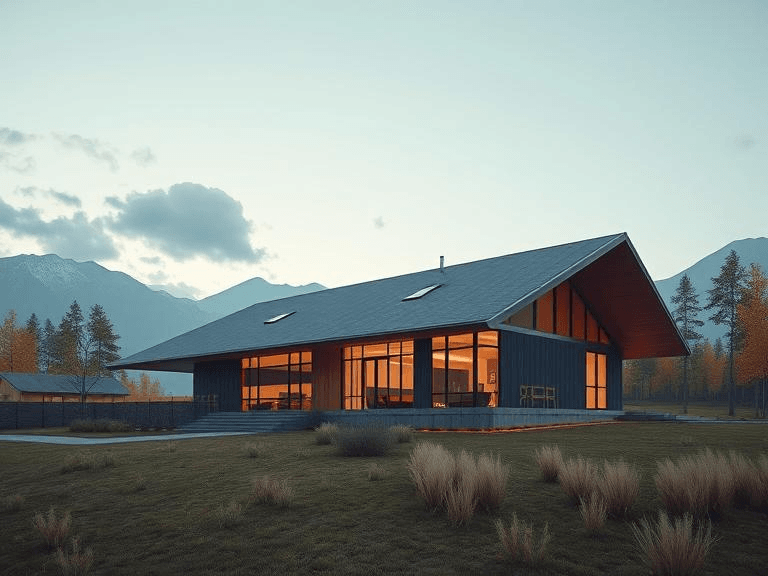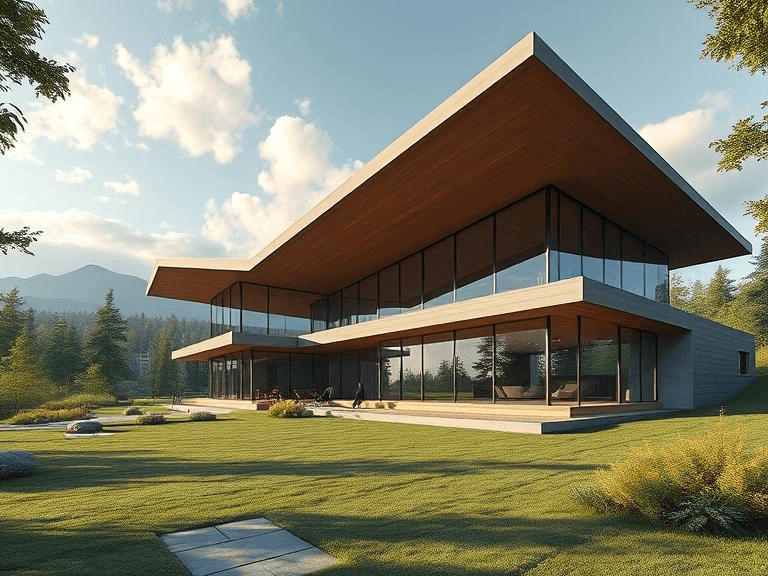
Architectural roof shingles are a modern advancement in roofing technology that provide a stylish and durable alternative to traditional three-tab shingles. These shingles, also known as dimensional or laminated shingles, are composed of multiple layers of material, which not only enhances their aesthetic appeal but also improves their performance. Unlike conventional shingles, architectural shingles are designed to mimic the appearance of more expensive roofing materials, such as wood shakes or slate, providing homeowners with an upscale look at a more accessible price point.
One of the key benefits of choosing the best architectural roof shingles is their superior durability. Constructed from higher-quality materials, these shingles are thicker and less prone to damage from harsh weather conditions, such as wind, rain, or hail. This robust construction translates to a longer lifespan, which can range from 30 to 50 years, depending on the manufacturer and the specific product. Homeowners looking for long-term value in their roofing investment will find that architectural shingles outlast standard shingles, making them an appealing option.
In addition to durability, architectural roof shingles also offer improved energy efficiency. Many modern architectural shingles are designed with reflective surfaces that help lower energy bills by reducing heat absorption. This thermally efficient characteristic makes them an eco-friendly choice that aligns with the growing emphasis on sustainable building practices. As a result, homes equipped with architectural roofing can maintain consistent indoor temperatures, ultimately leading to enhanced comfort for the occupants.
Choosing architectural roof shingles also allows homeowners to personalize their homes through a wide range of styles, colors, and textures. As roofing plays a significant role in a home’s curb appeal, selecting the right architectural shingles can transform the overall aesthetic of a property, making it more attractive to potential buyers and elevating its market value. With all these advantages, it is clear why many homeowners are opting for architectural roof shingles as a preferred roofing solution.
Types of Architectural Roof Shingles
When selecting the best architectural roof shingles, it is essential to consider the different types available in the market, as each offers unique characteristics that cater to varying preferences, climates, and architectural styles. One of the most popular materials for roofing shingles is asphalt. Asphalt shingles are favored for their affordability and ease of installation. They typically come in a range of colors and styles, allowing homeowners to choose options that best complement their property. However, asphalt may not be the most durable choice, as it can be prone to granule loss and may not withstand extreme weather conditions as well as other materials.
Wood shingles, another traditional option, provide a natural and rustic aesthetic to homes. Constructed from cedar or redwood, wood shingles offer good insulation properties and can last for several decades if properly maintained. Nonetheless, they can be susceptible to moisture damage, insects, and require regular upkeep, making them less suitable for regions prone to heavy rainfall or pest infestations.
Metal roofing has gained popularity due to its exceptional longevity and modern look. Metal roof shingles are resistant to fire, insects, and rot, making them suitable for a wide range of climates. Additionally, they can reflect solar heat, increasing energy efficiency. However, the initial cost of metal roofing can be significantly higher than asphalt or wood options, which may deter some homeowners.
Lastly, slate shingles are known for their timeless elegance and unmatched durability. They can last over a century and provide excellent fire resistance. However, slate is one of the heaviest roofing materials and requires proper structural support, which may not be feasible for all homes. Furthermore, installation is labor-intensive, contributing to higher overall costs. Each type of architectural roof shingle presents distinct advantages and disadvantages that should be carefully evaluated to ensure the best choice for your roofing needs.
Factors to Consider When Choosing Shingles
When selecting the best architectural roof shingles for your home, several key factors should be taken into account to ensure a wise investment. One of the primary considerations is durability. Architectural roof shingles are available in various materials, including asphalt, wood, metal, and slate, each with its own longevity and resistance to environmental factors. It is essential to choose shingles that can withstand the specific conditions in your area, such as heavy rainfall, high winds, or extreme temperatures.
Maintenance requirements also play a crucial role in the decision-making process. Some shingles are more prone to algae growth and require regular cleaning, while others may have low-maintenance properties that reduce the need for upkeep over time. Understanding the level of maintenance necessary will help in selecting shingles that align with your lifestyle and preferences.
Climate compatibility is another important factor to consider. Different types of shingles perform better in certain climates. For instance, if you live in a region prone to scorching sun, UV-resistant shingles would be a wise choice. Conversely, homeowners in colder areas might consider shingles designed to perform well under snow and ice conditions. Evaluating climate compatibility ensures that the selected shingles will function optimally for years to come.
Aesthetic appeal can significantly influence your choice of architectural roof shingles. Different colors, styles, and textures can enhance your home’s curb appeal, allowing for a custom appearance that reflects personal preferences. Additionally, one should also consider the cost of the shingles, including required installation expenses, to stay within budget while ensuring quality.
Finally, exploring warranty options can provide peace of mind. A comprehensive warranty can safeguard against manufacturing defects and other issues that might arise over time. By carefully weighing these factors, homeowners can make an informed choice in selecting the best architectural roof shingles for their needs.

Cost Analysis of Architectural Roof Shingles
When considering the installation of architectural roof shingles, understanding the various costs involved is crucial for making informed decisions. The initial investment in high-quality architectural shingles can vary, typically ranging from $3 to $5 per square foot. This upfront cost accounts for both the materials and labor needed for installation. Though this might seem higher than traditional three-tab shingles, architectural shingles offer better durability, longevity, and aesthetic appeal, making them a worthwhile consideration for many homeowners.
Beyond the initial installation costs, it is essential to factor in long-term maintenance expenses. Architectural roof shingles are generally low-maintenance; however, periodic inspections and maintenance can help extend their lifespan. Investing in regular upkeep can avoid more costly repairs down the line. In contrast to cheaper roofing alternatives, architectural shingles often come with extended warranties, which can further mitigate long-term financial risks associated with wear and tear.
Another significant aspect of cost analysis is the potential savings that architectural shingles can offer through improved energy efficiency. Many architectural shingles are designed with reflective materials that help maintain a cooler home during hot months, resulting in reduced air conditioning costs. Furthermore, with their ability to better insulate the house, these shingles can lead to increased energy savings throughout the year, effectively providing a return on investment.
When budgeting for a roofing project, it is advisable to obtain multiple quotes from different contractors. This step ensures competitive pricing and allows homeowners to gauge the overall market rate for the installation of architectural roof shingles. Additionally, be mindful of hidden costs that may arise during the process, such as removal of old shingles or unexpected structural repairs. Careful financial planning in these areas enhances the likelihood of a successful and sustainable roofing project.
Energy Efficiency and Environmental Impact
The energy efficiency of a roofing system is increasingly becoming a priority for homeowners. Architectural roof shingles offer various benefits in this regard, particularly with the advancement of reflective roofing materials. These shingles are designed to reflect solar radiation, which helps to reduce heat absorption into the building. Consequently, this can lead to lower cooling costs during the summer months and contribute to an overall reduction in energy consumption. Homeowners who opt for the best architectural roof shingles will not only enhance their home’s aesthetic appeal but also improve its energy performance.
Proper insulation is another critical factor when it comes to maximizing the energy efficiency of roofing systems. Architectural shingles, when combined with high-quality insulation materials, create a formidable barrier against unwanted thermal transfer. This combination can significantly reduce heating costs in the colder months and maintain a comfortable indoor climate year-round. It is essential to consider both the roofing and insulation elements when aiming for a sustainable energy-efficient home.
Moreover, there is a growing range of sustainable and eco-friendly options available in the realm of architectural roof shingles. Manufacturers are increasingly focused on producing shingles made from recycled materials, which minimizes waste and supports a circular economy. Additionally, some shingles are now available with long-term warranties, further enhancing their sustainability profile. When choosing the best architectural roof shingles, it is advisable to select products that comply with environmentally responsible standards, ensuring minimal negative impact on the environment while optimizing energy efficiency.
In summary, integrating energy-efficient architectural roof shingles within a roofing system not only aligns with financial considerations but also promotes environmental sustainability. Through the careful selection of reflective materials, robust insulation, and eco-friendly options, homeowners can achieve significant benefits both economically and environmentally.
Installation Process of Architectural Roof Shingles
The installation of architectural roof shingles is an integral aspect of roofing that can significantly affect the performance and aesthetics of a building. First, homeowners must decide whether to hire professionals or undertake a DIY approach. While DIY installation can save costs, it requires a thorough understanding of roofing principles and safety precautions. Hiring professionals ensures quality assurance and compliance with local building codes, which can reduce the risk of costly mistakes.
Before commencing the installation, it is crucial to gather the necessary tools and materials. Essential tools include a roofing nailer, ladder, utility knife, measuring tape, chalk line, and safety gear like gloves and goggles. Ensuring that the roof decking is in good condition is vital; any signs of damage should be repaired before proceeding. Moreover, selecting the appropriate underlayment is equally important, as it serves as a waterproof barrier that complements the architectural shingles.
Once all preparations are complete, the installation can begin. Start at the lower edge of the roof and work upwards, overlapping each row of shingles to promote effective water runoff. Proper fastening techniques are critical; shingles must be securely nailed to withstand wind uplift. Ensure that the manufacturer’s installation instructions are closely followed, especially regarding starter strips and ridge shingles, as they can greatly impact the roof’s longevity and performance.
During the installation, it is advisable to check for alignment and overhangs regularly. Proper alignment not only enhances visual appeal but also aids in water drainage. It is essential to allow for some expansion and contraction with temperature changes, ensuring the shingles can perform effectively under various conditions. The final step involves cleaning up any debris and conducting a detailed inspection to confirm that the installation meets both safety standards and aesthetic expectations.
Maintenance and Care Tips
To ensure architectural roof shingles provide maximum durability and aesthetic appeal, regular maintenance and care are essential. One of the most effective ways to extend the lifespan of roof shingles is through routine inspection. Homeowners should conduct a thorough examination of their roof at least twice a year, preferably in the spring and autumn. During these inspections, look for signs of damage, such as cracked, curling, or missing shingles, as well as areas where debris may accumulate. Early detection of issues allows for timely repairs and helps prevent further damage to the roof or underlying structure.
Cleaning is another critical aspect of maintaining architectural roof shingles. Over time, roofs can accumulate dirt, moss, and algae, which not only detract from their appearance but can also lead to significant damage. For general cleaning, a gentle rinse with a hose or pressure washer set at a low pressure can effectively remove debris and buildup. However, care must be taken not to damage the shingles during this process. If moss or algae growth is significant, consider using a specialized roof cleaning solution designed for this purpose. It is also advisable to avoid using harsh chemicals that may degrade the materials of your shingles.
While homeowners can handle basic maintenance tasks, it is crucial to know when to seek professional assistance. If inspections reveal damage that cannot be easily repaired, or if the roof has reached an age where ongoing concerns are evident, consulting a roofing professional is advisable. Professionals possess the expertise and equipment necessary to carry out repairs and replacements safely and effectively. By following these maintenance and care tips for architectural roof shingles, homeowners can ensure longevity and efficiency in their roofing systems, ultimately protecting their investment.
Replacing Old Roof Shingles: When and How
Determining the right time to replace old roof shingles can significantly impact the longevity and performance of your roofing system. Several signs indicate that it may be time for a replacement. Look for visible damage, such as curling, cracking, or missing shingles. Additionally, discolored patches or granule loss in your gutter can highlight potential issues with the roofing material. A roof that is over two decades old might also warrant a thorough inspection to assess its overall condition. If you observe any of these signs, it’s prudent to address the concerns promptly.
The process of replacing old roof shingles typically begins with a comprehensive inspection by a qualified roofing contractor. This inspection will help determine the extent of damage and inform the necessary steps moving forward. Following this assessment, the timeline for replacement can be established. Generally, the replacement process can take one to several days, depending on the size of the roof and the complexity of the work required.
Once you have decided to proceed with the replacement, preparation is essential. Begin by clearing the surrounding area to ensure a safe working space. Discuss with your contractor about the choice of new shingles, particularly focusing on architectural shingles’ benefits, which include their durability and aesthetic appeal. On the scheduled day, the process will involve removing the old shingles, inspecting the underlying decking, and making any necessary repairs before installing the new architectural roof shingles. This methodical approach not only ensures a reliable roof but also maximizes the lifespan of your new shingles.
Engaging professionals with experience in choosing the best architectural roof shingles will help streamline the project and guarantee satisfactory results. By understanding the signs that lead to replacement and the detailed steps involved, homeowners can confidently tackle roof replacement projects with minimal disruption.
Final Considerations and Recommendations
As we have examined throughout this comprehensive guide, choosing the best architectural roof shingles involves a careful evaluation of several factors, including material composition, aesthetic appeal, durability, and cost. Architectural shingles, known for their dimensional appearance and enhanced performance compared to traditional three-tab shingles, can significantly influence the overall look and longevity of a roof. It is paramount to weigh these characteristics against your specific needs and preferences.
One of the most critical aspects is considering the climate in which the shingles will be installed. Different materials offer varying levels of performance in terms of resistance to wind, rain, and UV exposure. Additionally, the architectural style of your home and neighborhood may also play a pivotal role in determining which shingles complement the overall aesthetic. Notably, communication with local zoning regulations and covenants may further guide your selection process.
Moreover, it is advisable to prioritize quality over mere cost savings when choosing architectural roof shingles. While it might be tempting to select the least expensive option, investing in higher quality products can often save homeowners money in repairs and maintenance in the long run. Furthermore, selecting reliable manufacturers that provide warranties can offer peace of mind and safeguard against potential issues.
In conclusion, the selection of architectural roof shingles should be approached with diligence and consideration. Consulting with roofing professionals can provide tailored guidance to ensure the best choice for your particular circumstances. These experts can assist in understanding the nuances of different products and recommend shingles that align with both your functional requirements and aesthetic preferences, ultimately leading to a successful roofing project.


